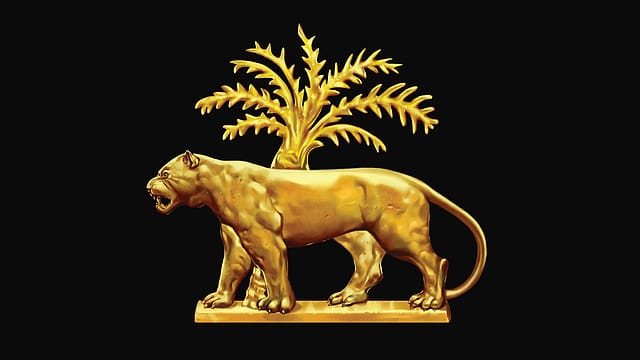India’s foreign exchange reserves at lifetime high
ADVERTISEMENT

At $568.5 billion, India’s total foreign exchange (FX) reserves have touched a new life-high, during the week ended Nov. 6 this year. Compared to $447.8 billion in the similar period a year ago, the absolute growth is $120.7 billion—almost 27%.
On a ten–year horizon, compared to $300.2 billion during the week ended Nov. 5, 2010, the absolute growth in the FX reserves has been a little over 89% or $268.3 billion in value terms.
The FX buffers’ build-up is an outcome of the Reserve Bank of India going on a buying spree of US dollars (USD). During 2020, until August, the RBI had purchased a net $49.7 billion—much higher compared to the net $40.3 billion it purchased during the twelve months of 2019.
And, on financial year basis, FY21 (April to August) has witnessed RBI being net purchaser of $34.3 billion as compared to $45.1 billion purchased during FY20 (April 2019 to March 2020). And there seems to be hardly any pause. Aastha Gudwani and Indranil Sen Gupta, both India economists with Bank of America Securities, expect the RBI to buy $77 billion in FY21.
January 2026
Netflix, which has been in India for a decade, has successfully struck a balance between high-class premium content and pricing that attracts a range of customers. Find out how the U.S. streaming giant evolved in India, plus an exclusive interview with CEO Ted Sarandos. Also read about the Best Investments for 2026, and how rising growth and easing inflation will come in handy for finance minister Nirmala Sitharaman as she prepares Budget 2026.
In their latest report, Gudwani and Sen Gupta have revised upwards their previous projection of RBI’s FX buying which was pegged at $66.3 billion. This hike in RBI’s forecasted FX intervention by $6 billion to $77 billion follows their upward revision of current account surplus forecast by 20 basis points, or 0.20%, to 1% of GDP. According to Gudwani and Sen Gupta, the trade deficit worsened to $8.7 billion in October from $2.7 billion in September, as exports fell again, led by oil.
Imports, however, continued to decline, but at a slower pace, as both gold and non-oil, non-gold imports performed relatively better. “We project the current account surplus at $13 billion in the September quarter, down from June's $19.8 billion,” the duo said.
Their balance of payment (BoP) estimates place FY22 RBI FX intervention at US$45 billion, at a current account deficit of 0.5% of GDP and Brent crude, forecasted by BofA Securities’, oil strategists at $50 per barrel.
Going forward, Gudwani and Sen Gupta continue to expect the RBI to follow an asymmetric policy of buying FX when the dollar weakens and allowing Indian Rupee (INR) to depreciate when it strengthens. “After all, high FX reserves are India's only buffer against potential contagion in an uncertain world,” the duo noted. They do not expect the RBI to let its guard down easily.
A policy of trying to allow appreciation of the INR at the cost of FX reserves in 2009-11 finally led to massive depreciation in 2011, 2013, and 2018. In the duo’s view, it has only been (recently) in the last ten years that the RBI has been able to rebuild adequate FX reserves.
The duo expects the RBI to buy FX when the USD weakens and allow the INR to drift towards ₹75 a dollar if it strengthens under the Biden-Harris administration. Given that BofA Securities’ US economists now expect a fiscal stimulus of $500 billion – $1 trillion in February 2021, in their base case.
“In case of a greater-than-expected stimulus, the RBI will likely buy up risk-on FPI (foreign portfolio investment) flows to add to FX reserves,” Gudwani and Sen Gupta noted. “In case of a disappointment leading to a risk-off in markets, we see the RBI letting the INR weaken to ₹75 to ₹76 a dollar.
Although the duo prefers to see economic or market movements as products of global cycles rather than a country's political leaders, still, experience shows that a stronger dollar led to a weaker INR under Democratic Presidents Bill Clinton and Barack Obama. “However, this is the first time that the RBI is entering a possible Democratic administration with adequate FX reserves,” the duo added.
They also point to the fact that the U.S. has seen relatively higher growth (2.7%) under Democrats than Republican (2.3%) presidents, which has led to relatively higher Indian growth under Democrats (6.5%) than Republicans (6%).
But the Covid-19 induced uncertainties are the key differentiating factors this time. For India, right now the Indian rupee is okay, but India’s gross domestic product (GDP) is not. For the quarter ending September 2020, Gudwani and Sen Gupta expect India's GDP contraction to moderate to 7.8% (a downward revision from 11% forecasted earlier)— a figure which is much better than June quarter's 22.8% decline.
Yet, the duo retain their 7.5% FY21 GDP contraction projection with Covid-19 cases persisting at 40,000-plus levels, pushing out restrictions further. “This reinforces our view that the situation remains grim, although we think the worst is over,” Gudwani and Sen Gupta noted. Clearly, uncertainty is going to be the way forward in 2021 too.
